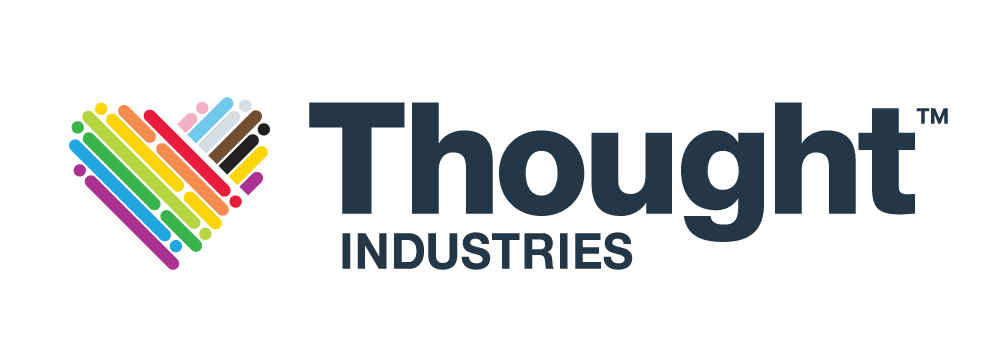How to avoid the common pitfalls and convert more courses in less time.
Companies that intend to survive the current downturn no longer have the luxury of developing courses at a steady, drip-drip pace, following all of the traditional instructional design rules and procedures.
Right now, with so many remote learners, everybody is moving fast to put their training content online because that’s where eyeballs, audience and market share are.
No wonder the practice of “rapid eLearning” has become essential for remote learning. While all kinds of formal definitions have been applied to the concept through the years, we like to keep it simple. Rapid eLearning refers to the practice of rapidly producing engaging online learning experiences, preferably using a learning platform with native course authoring capabilities.
That doesn’t mean you’re taking whatever you have on hand — pre recorded conference lectures, slide decks or textbooks — and slapping them onto your website or into your catalog and calling it done. Learners have become accustomed to certain standards, and you have to maintain those to keep people engaged.
In this article, I share the do’s and don’ts of rapid eLearning development to help you get the formula right.
The benefits of shifting to rapid eLearning
Besides the obvious advantage of speed-to-market, a shift to rapid eLearning offers other benefits too:
- You’ll find that this approach can be done with fewer people;
- You can repurpose your existing content in new ways without a great deal of effort;
- Because eLearning is designed to be more modular, you can iterate on the content rapidly and be more responsive to needed updates;
- You widen your base of subject matter experts (SMEs), which means you can work on more streams of eLearning content in parallel;
- Accessibility is easier to achieve, broadening your learner population; and
- You’ll see a faster return-on-investment.
We touch on all of these more as I take you through the paces of how to achieve rapid eLearning.
What works for rapid eLearning and what doesn’t
You might think that some kinds of training courses lend themselves better to rapid eLearning courses than others. It used to be, for example, that second language learners had to get that kind of instruction in a classroom, where they could interact with others learning the same language. That’s no longer true, since just about any kind of instruction can be turned into a digital format.
Yes, at some point, nursing, welding and law enforcement students need to transfer the skills they’re learning online into the physical world. But with few exceptions, the differences are narrowing.
Language students can pull up an app and request a live practice session with another person around the world who speaks the language as a native. You can incorporate Zoom, Google Meet or Skype sessions into your curriculum at key moments to provide similar real-time feedback or interaction opportunities for your learners.
In other words, there are few limits to what you can accomplish given the right eLearning software.
Besides, you’re surrounded by subject matter experts
Find that your co-workers are spending their time on Snapchat, Instagram and YouTube posting videos of whatever? Consider inviting those same individuals to create the learning content you need. You’ll find that some of them have a real knack for explaining how to use your software to do a task or solve a problem. These days, the amateur course developer who is a subject matter expert can create amazing courses. Think of it like citizen development tools that enable anyone to build an application without coding, only simpler.
To get that set up, figure out what it is they’re especially good at, person by person, and target your assignments to them. Then set up a style guide and take them through it before they start developing anything. It needs to include:
- The rules for creating the videos or audio recordings, including the settings to use, how to handle the recording and how to set up optimal lighting for videos;
- Links to the templates for slideshows;
- Details about how to refer to your products;
- Spelling options;
- How to title the instruction and what headers to use;
- How to speak — first person, second person, present tense, past tense; and
- Tonal suggestions: Super-professional versus friendly and informal.
Those kinds of details can take a long time to fix after the fact. Include anything that could be even remotely misinterpreted. Then keep the style-guide up to date as new decisions surface.
Also, make sure you give your SMEs deadlines while also recognizing that creating your learning content isn’t their job one. Be respectful and understanding on that point.
Do’s and don’ts of rapid eLearning
Do: Mix up your content.
If you’re accustomed to creating in-person training, think about ways to deliver the same instruction online. Videos can be easy and quick to create and you don’t need a lot of resources to create them. But a learner might sit for an hour paying attention to a dynamic speaker who is presenting up on the stage, that’s hardly ever the case when the speaker has been recorded and you’re watching on a screen.
Consider mixing clips of lecture with audio and slides; add in quiz questions; and break that hour into modules, so the learner can dip into it throughout the day.
Do: Understand your audience.
That’s the only way to figure out what makes for a good learning experience. If gamification isn’t something your learners are motivated by, then don’t include it. The same with the use of lengthy reading assignments or long, unbroken videos.
Rapid eLearning incorporates the concept of rapid iteration. Figure out what best works for your audience through trial-and-error and do more of that. If you have instructional design talent on hand, have them guide your broad efforts and send you in the right direction.
Do: Make it relevant early on.
Adult learners are always going to be more engaged with the learning if they understand why they need to learn something. Then keep bringing the lesson back to that relevance to help them make the connections. Always remember the importance of “What’s in it for me?”
Do: Keep your content professional.
If your lessons look substandard, you’ll shake people’s confidence in the content. That means double-checking for spelling or grammar errors and taking the time to make sure your images are sharp, crisp, germane and cohesive versus showing a mishmosh.
Don’t: Provide real-time learning opportunities without also including recorded versions.
Think about what learners are going through right now. They may be working from home without the usual office disruptions, but at the same time they could be helping their children with school work in between bouts of productivity.
Your audience may not be able to show up for that amazing real-time web conference, so you should always record! Make sure you also enable learners to watch the event later on, when it works for their schedule.
Don’t: Let perfection become the enemy of the good.
If you have a remarkable curriculum that lasts for hours — like a typical face to face course might — don’t wait until you have it completely converted for eLearning before releasing any of it. Publish it online as you finish sections. Then later on you can go back and sew it together into a cohesive curriculum. You’ll be less overwhelmed, and so will your learners.
Don’t: Assume your learners know what to do with online learning.
Come up with a consistent narrative voice that welcomes learners and shows them how to progress through your course or lessons, whether that’s a video introduction, a brief slideshow or written directions — or, even better, all three.
If the materials are a work in progress, the narrative voice can acknowledge that. The idea is to create a personal relationship between your company and the people you’re trying to reach. Besides, learners are more forgiving right now if they see that you’re making an effort and expect to get better with time.
Use the ideal course authoring tool
Historically, one of the biggest hurdles to developing professional learning content has been the complexity of the authoring tools that were used in its creation. They were niche, requiring special training and special integrations with learning management systems. Companies had to know what they were doing, and they didn’t always end up with great results.
The process involved lots of people and went something like this:
- One or more people worked with a subject matter expert to develop the content.
- Then the content was sent to somebody who was trained on the authoring tool to design the courses.
- From there, the results were sent into a cycle of testing by a quality team and returned to the authoring tool expert for debugging.
- Over and over and back and forth.
Now, you can find learning platforms such as the one from Thought Industries that include native course authoring tools usable by anybody with a basic introduction, including the subject matter expert. These rapid course authoring tools speed up the pace that eLearning content is produced and allows your crew to focus on the substance of what they’re trying to teach rather than how to wield the software to author the course or lesson.
How to identify the right authoring tool:
Learning Content Templates
A big signal is the availability of design templates and widgets. You might have the best content in the world, but if it looks terrible to learners and is hard to navigate, that’ll be a turnoff. Templates give you a big head start by providing a well-chosen mix of color palette, fonts, layout and interaction tools that are appropriate for different content types.
Drag-and-drop functionality for online training content creators
The moment your content creators need to code something, you can forget about rapid creation of eLearning. Drag-and-drop allows them to use the functionality of the authoring tool without much experience. They can experiment, keep what works, discard what doesn’t, and move on.
Built-in online training content engagement
The best authoring tool is the one that lets your content creator add new features and functions without much difficulty. That could include quick incorporation of interactive activities, such as discussion forums, quizzes, gamification, recommendation features and even journaling or intentional reflection queries. Each of these is intended to reach out to the learner at certain points in their course or lessons and let them interact in asynchronous modes. Several let you put the burden of engagement where it belongs — on the learners themselves.
Will rapid eLearning save you money?
It’s possible to create an online course quickly and spend a small fortune on development costs, and it’s possible to do it on the cheap and save a bundle. Remember: The idea with rapid eLearning is to approach the job of converting your traditional content into digital lessons and curriculum with a minimal crew using streamlined technology and getting the job done in a hurry.
Outfitted with the right learning platform and course authoring technology, you can assign a squadron of newly-deputized SMEs to author lessons with the right software, then launch it into the world and continually move forward with incremental improvements as well as new curriculum.
Will that approach save you money? There are too many variables for me to be certain.
However, I will say that your return on investment is bound to be faster, and of course, time is money. After all, if you’re getting your online training content out there more quickly, people can access it sooner, which means that if it’s paid content, you’ll be able to actualize revenue more rapidly.
So, what are you waiting for? Rapid eLearning will help you get more done, faster. And that’s really important right now.




